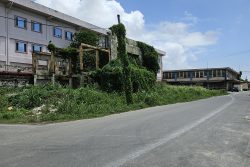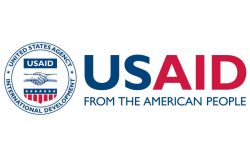Today’s column wraps up my discussion of the Resource Curse. This is the second of the top ten development challenges, which I have said the Government of Guyana’s (GoG) spending of fiscal take from its oil wealth has to navigate in the coming years. Afterwards, I shall turn to consider the Governance Curse. This has been placed third on the list of challenges. Today’s wrap-up essentially identifies, briefly, four issues that were not satisfactorily addressed in last week’s column.
Resource Curse (Cont’d)
The first of these issues is that in recent years several analysts have presented the Resource Curse under a very broad rubric. This rubric covers several of my listed challenges as its subsets. For example, the Dutch Disease, which has been already addressed. I do not, however, share this position, simply because it runs the risk of creating for one challenge an amorphous jumble of complex considerations.
A second issue is that research has identified distinct drivers of the Resource Curse. These include the propensity in affected countries towards 1) weakened institutions; 2) a deterioration in the standards of governance; and, 3) the consolidation of “rent seeking behaviour” (discussed in last week’s column). These drivers reflect those historical forces that typically encourage rent seeking behaviour in “poor petroleum abundant states.” In Guyana, such forces include: its small size; its colonial evolution; its external dependence (openness); and, its low levels of income, wealth and spending power (without oil and gas revenues).
The third issue is one that I have reminded readers of frequently in this ongoing series of columns, that is, the unique features of the oil and gas extractive sector. Some of those key features are shown in Schedule 1. As can be observed, these range from the humongous capital expenditure (capex) required upfront through the high volatility of the crude oil market, to the tremendous environmental threats, which have to be overcome. Every characteristic in the Schedule is formidable. Consequently, when taken together, they are almost overwhelming, particularly for Guyana-type economies, which are without a fully developed framework (legal, institutional and regulatory) in which to locate the emerging petroleum sector.
Finally, I briefly allude to a few widely recognized policy responses aimed at limiting the adverse effects of the Resource Curse. In purely random order, these include measures to advance/promote: 1) democratic governance; 2) conflict resolution, mediation and social cohesion; 3) a reduction in revenue and spending volatility; 4) advocating national savings; 5) modulating inflows of petroleum revenues to match the pace at which it can be spent, without creating inflationary pressures; and 6) protecting the environment from well-known hazards (oil spills, pollution, and carbon emissions). Given the Green State objective for Guyana, robust environmental policies are an imperative.
Further, to the measures identified above, those dealing with the Dutch Disease that were considered last week also apply; for example, containment of exchange rate appreciation and the avoidance of debt creation.
Summary
The Natural Resource Governance Institute’s Reader, in its concluding paragraph on The Resource Curse, best summarizes my considered position on this topic. It posits: “The Resource Curse is not inevitable.” It goes on to observe: “several countries that have natural resource wealth do not exhibit many of these tendencies.” Consequently, therefore, the Reader recommends it is best to refer to these situations as: “challenges associated with natural resource extraction, rather than the resource curse.” It goes on to advance the view that its research “help(s) countries understand the risks, and opportunities at various points in natural resource governance.” This series of columns seeks to do the same for Guyana.
The Governance Curse
The third of the listed top ten development challenges indicated earlier is the Governance Curse. There is a tremendous body of literature on this topic. However, since my focus in this series is principally on the political economy of Guyana’s emerging petroleum sector, I shall not dwell on this topic at the length it probably deserves. Instead, I shall simply note several features of this topic as they relate to the GoG’s navigation of its raising and spending expected petroleum revenues. The concern that starts the discussion is the basic question: what is meant by “governance” in this context?
Definitions
A widely accepted definition (Wikipedia) directly portrays governance as: “all of the processes of governing.” This includes: “the processes of interaction and decision making” in pursuit of developing the oil and gas industry in Guyana. Such processes are both formal and informal in nature. Most lay persons understand governance as limited to the Government, and, perhaps, at best, both the national (central) and local levels. In fact, however, governance includes far wider considerations. Thus, for example, markets in Guyana are mainly responsible for the governance of economic transactions. In actuality, therefore, governance refers to the multitude of laws, regulations, rules, norms, and actions, which prevail in Guyana.
Challenges
In discussing this topic, I shall focus on four aspects of the Governance Curse. These will be: 1) “regime entrenchment;” 2) matters pertaining to the “rule of law” especially corruption; 3) the governance impact of both rising and volatile oil revenues; and, once again, 4) the adverse effect of “rent-seeking” behaviour (first introduced in the discussion of the Resource Curse).
Conclusion
Next week I shall briefly consider the four topics identified in the above paragraph. This will conclude my discussion of the Government Curse. I shall then take up the fourth of the top ten listed development challenges, which spending from the GoG’s take will have to navigate. ̶ Absorption Capacity.











